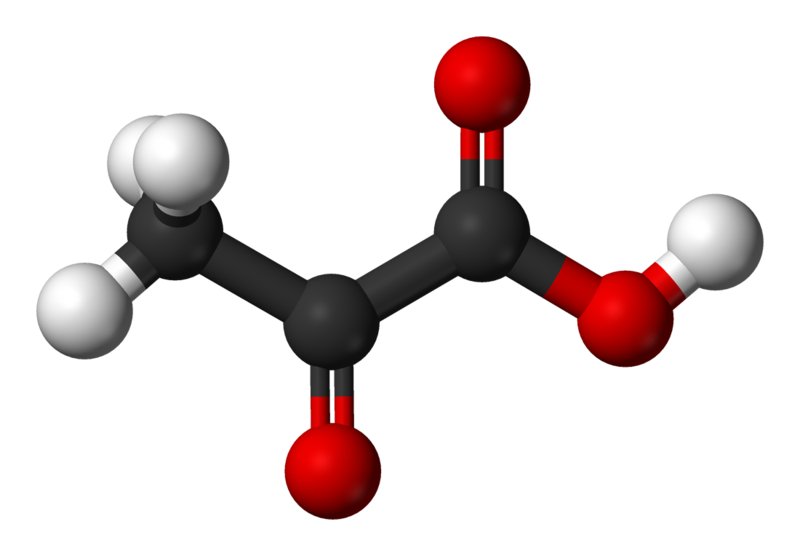-
 Kepler's second law
Kepler's second law
-
 Pigouvian tax
Pigouvian tax
-
 M 84
M 84
-
 Astigmatism
Astigmatism
-
 Deposit
Deposit
-
 Myelomeningocoele
Myelomeningocoele
-
 Telematics
Telematics
-
 Riemann surface
Riemann surface
-
 Virtual universe
Virtual universe
-
 Java
Java
-
 Aldohexose
Aldohexose
-
 Iron-bearing formation
Iron-bearing formation
-
 Desquamation
Desquamation
-
 Primaries (feathers)
Primaries (feathers)
-
 Nanomachine
Nanomachine
-
 Chain reaction
Chain reaction
-
 Web-footed bird
Web-footed bird
-
 Main cryogenic stage
Main cryogenic stage
-
 Arboreal
Arboreal
-
 Hooklet
Hooklet
-
 Caulinary
Caulinary
-
 Denervation
Denervation
-
 Lysine
Lysine
-
 Parasol
Parasol
-
 Electron neutrino
Electron neutrino
-
 Gas giant
Gas giant
-
 Autopoiesis
Autopoiesis
-
 Exfoliation
Exfoliation
-
 Prostatectomy
Prostatectomy
-
 Chitin
Chitin
Pyruvate
Pyruvate is the anionic form of pyruvic acid. It is also a major biological molecule.
Structure of pyruvate
Pyruvate is a α-keto-acid with the structure CH3-CO-COOH, which has a carboxylic acid (COOH) group and ketone group.
Function of pyruvate
Pyruvate is a metabolite involved in a large number of biological processes:
- Firstly, the Krebs cycle: pyruvate is decarboxylated by a multi-enzyme complex into acetyl-coenzyme A, a molecule involved in the first stage of the Krebs cycle;
- Secondly, glycolysis: pyruvate is the final product of glycolysis (two pyruvate molecules are formed from a glucose molecule). Thridly, they are obtained from the dephosphorylation of PEP (phosphoenolpyruvate) and transfer phosphate to an ADP molecule to form an ADP molecule.
- Lastly, gluconeogenesis: pyruvate is converted into oxaloacetate by pyruvate carboxylase.
 Pyruvate is the ionised form of pyruvic acid. © Benjah-bmm27, Wikimedia, public domain
Pyruvate is the ionised form of pyruvic acid. © Benjah-bmm27, Wikimedia, public domain
Latest
Fill out my online form.



